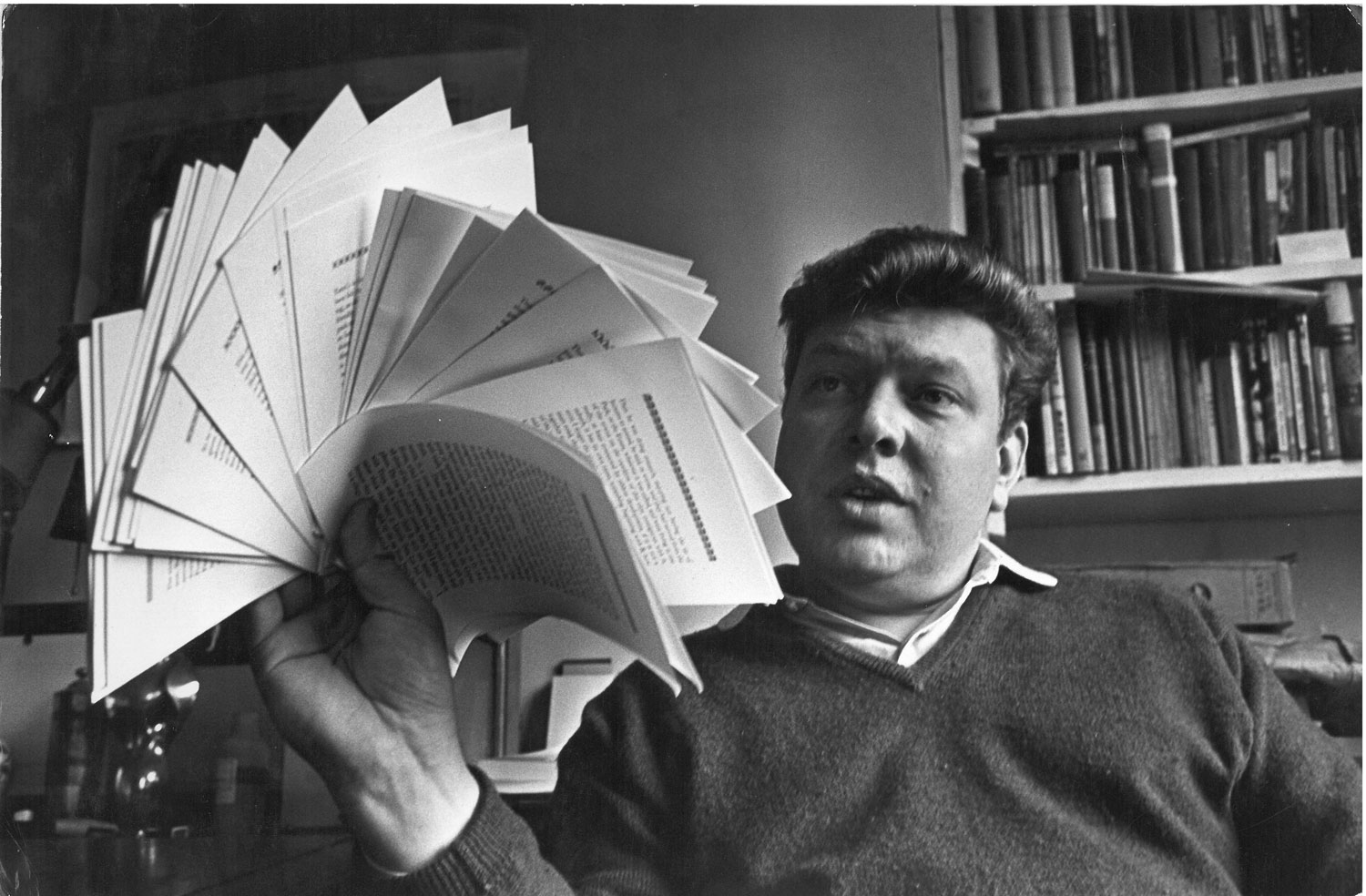The work of B.S. Johnson (1933–73) has for too long been saddled with the deadly label ‘experimental’. A notorious figure on the British literary landscape of the 1960s, he slipped into cultish obscurity soon afterwards, but is now enjoying a renaissance; and while it is true that he often took up militantly avant-garde and contrarian positions in his theoretical writings, one of the things that distinguishes his novels and shorter prose pieces is their lucid accessibility.
Johnson wrote seven novels in a productive lifetime cut short by suicide at the age of forty. They are famous for their formal gimmickry – holes cut through the pages to provide flashforwards to future events, unbound chapters presented in a box to represent the randomness of memory – but they are also passionately emotional, as well as providing a valuable record of the times in which they were written. Johnson borrowed devices (indeed a whole aesthetic) from the French nouveau roman, but at the same time he was a committed realist – a working-class product of the era which also brought us Alan Sillitoe, John Braine and others. He believed that the writer’s paramount duty was to tell the truth, while recognizing that this truth would always be subjective, coloured by specific psychological and historical influences.
The fragment presented here, under the title ‘What Did You Say the Name of this Place Was?’, is quintessentially Johnsonian, and wears its subjectivity proudly on its sleeve. It arose from a suggestion by his then publisher, Philip Ziegler at Collins: ‘I tried to get Bryan to do a sort of travelogue, a non-fiction book, to move around England and write his own experience of places. He did a piece about Bournemouth, but I couldn’t see it working for us at all.’ ( Just such a travelogue was written, in fact, a few years later by Beryl Bainbridge, and published in 1984 as English Journey: Or the Road to Milton Keynes.) If Ziegler had been hoping for anything resembling a conventional travel book, then he had asked the wrong writer. Johnson’s impressions of Bournemouth include many pertinent comments on architecture, of which he was a keen and knowledgeable amateur student. Equal emphasis, however, is given to two of his perennial obsessions: his horror of the ageing process (Bournemouth has a famously elderly population), and his sense of hurt and abandonment at the ending of a disastrous student love affair ten years earlier – betrayed, as he saw it, by the woman he had already excoriated in at least three of his novels: ‘she whom I have called all those names, Jenny, Gwen, Wendy’.
On top of that, he finds time to include references to another of the defining experiences of his early life – his lengthy evacuation to the countryside during the Second World War, and consequent separation from his beloved parents. Johnson was never able to understand why his mother and father made him spend almost the entire war living with strangers, and the rawness with which he writes about them here (‘That night I cried because they wouldn’t let me sleep in their bed’) suggests that this particular wound never fully healed.
‘What Did You Say the Name of this Place Was?’, in other words, despite its brevity, gives an almost perfect potted introduction to the Johnsonian universe. It is, like all of his work, maddening, pretentious, compelling and brilliant. Anyone sufficiently intrigued by it to seek out his novels will find that his bitter preoccupations are there played out at greater length, and they will have a profoundly affecting experience waiting for them.

